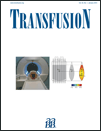A national mapping assessment of blood collection and transfusion service facilities in Afghanistan
Material has been reviewed by the Walter Reed Army Institute of Research. There is no objection to its presentation and/or publication. The opinions or assertions contained herein are the private views of the author and are not to be construed as official or as reflecting true views of the Department of the Army or the Department of Defense.
Partial results presented at the International AIDS Society conference, Abstract TUPE368, Rome, Italy, July 19, 2011.
Funded by the Military Infectious Disease Research Program and Armed Services Blood Program.
Abstract
BACKGROUND: The purpose of this study was to assess functionality and resources of facilities providing blood collection and transfusion services in Afghanistan.
STUDY DESIGN AND METHODS: This national cross-sectional assessment included facilities collecting or transfusing blood identified through official data sources and private key informants. At each facility, study representatives completed a standardized instrument assessing presence of records logbook, electricity, refrigeration, and required transfusion-transmitted infection (TTI; human immunodeficiency virus, syphilis, and hepatitis B and C) test kits. Descriptive statistics were generated, with differences analyzed using chi-square or Fisher's exact tests.
RESULTS: Between August and November 2010, a total of 243 facilities were surveyed with public (52.3%, n = 127) and private (43.2%, n = 105) sector comprising the majority. Most (63%) facilities were urban, with 23.5% located in Kabul province. Of 92,682 units collected nationally in the 12 months before evaluation, 7.5% (n = 6952) had no disposition record. Many (62%, n = 151) facilities had an established recordkeeping system; the remainder provided estimates. Half of surveyed facilities had regular power supply (57.8%), refrigerators for storing blood (52.3%), or all necessary TTI test kits (62.1%). Military (83.3%) and public (74.8%) facilities were more likely to have all TTI test kits present compared to private (46.7%, p < 0.01) but not nongovernmental organization (40.0%, p = 0.37) facilities.
CONCLUSION: In Afghanistan, blood donation and transfusion occur with substantial differences in data recording and TTI test availability, with private facilities less likely to have these resources. Efforts are needed to improve available resources and ensure that facilities are in compliance with national standards for donor screening.




